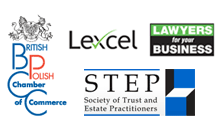Estate agents must do more for their money than simply show a potential purchaser around a property, following a recent decision of the Court of Appeal.
When a Mrs Bicknell signed a standard sole-agency agreement with Foxtons Ltd. to sell her £1.4 million home, she agreed, among other things, to pay the agency 2.5 per cent of the sale price if contracts were exchanged ‘with a purchaser introduced by us [Foxtons]’.
In June 2005, Foxtons showed a Mr and Mrs Low around the house three times but, after initially showing interest in the property, the couple took no further action. In July, Mrs Bicknell ended the sole agency arrangement and agreed a multiple agency deal with Foxtons at 3 per cent commission.
She then appointed a second firm, Hamptons International, at a 2.25 per cent commission rate. In October, Hamptons spoke to the Lows and persuaded them to view the house again, eventually securing an offer of £1.15 million for the property. The offer was accepted and the purchase was completed in January 2006.
Hamptons duly submitted an invoice for their commission and received payment. When Foxtons learned of the sale, however, they also sought to be paid a commission. When payment was refused, they commenced court proceedings. The lower court decided in favour of Foxtons on the basis that the Lows were a purchaser introduced by Foxtons and this alone was sufficient to secure their right to a commission.
On appeal, the question of the meaning of ‘a purchaser introduced by us’ was again raised. The Court of Appeal held that in order to charge commission, an agent must be the effective cause of the sale. Simply introducing a property to a person who eventually becomes the purchaser is not sufficient.
Had the reverse been true, Mrs Bicknell would have been in the unusual position of having to pay two agencies a commission for the same sale. Mrs Bicknell was not required to pay Foxtons for their initial, unsuccessful, introduction.
July 2008 |

